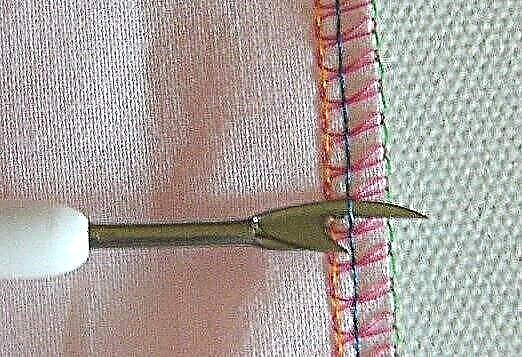Our guide will help you not to get lost in a fascinating "cellular" world.
How often we see in stores, on the catwalks, on the Internet and on television, prints and patterns on fabrics that have become familiar, but we don’t know how they are called! Without realizing it, we say "checkered fabric" in relation to such a variety of ornaments that it literally borders on disrespect for the history of these famous patterns. Today, as part of the new Theme of the month, our "Cell Guide" will help you understand the intricacies of ornaments!
Tartan
 Most often, we call tartan “plaid”, although in fact these two words originally meant slightly different things: plaid - fabric, tartan - pattern. Of course, this print is famous for its Scottish kilts: "tuar tan" translates as "the color of the area", and this is by no means a lyrical poetry, but the most practical reality - the Scottish clans dyed sheep’s wool for kilts with natural dyes. Someone used algae for brown, some alder bark for black, some blueberries for blue, and since they received different dyes in different parts of Scotland, the color of the tartan clearly showed where the clan was from. So it is not surprising that in the world there are a huge number of varieties of tartan, each of which has its own name.
Most often, we call tartan “plaid”, although in fact these two words originally meant slightly different things: plaid - fabric, tartan - pattern. Of course, this print is famous for its Scottish kilts: "tuar tan" translates as "the color of the area", and this is by no means a lyrical poetry, but the most practical reality - the Scottish clans dyed sheep’s wool for kilts with natural dyes. Someone used algae for brown, some alder bark for black, some blueberries for blue, and since they received different dyes in different parts of Scotland, the color of the tartan clearly showed where the clan was from. So it is not surprising that in the world there are a huge number of varieties of tartan, each of which has its own name.
Black watch
 One of the most famous tartans, the military watch black tartan, which translates as "black watch". In 1739, George II created this special regiment, which spent the next 270 years guarding the interests of the British Crown. Over the years, Black Watch has conducted 164 battles, each of which is with honors. Today, any of us can touch history, having opted for this noble pattern of deep saturated tones.
One of the most famous tartans, the military watch black tartan, which translates as "black watch". In 1739, George II created this special regiment, which spent the next 270 years guarding the interests of the British Crown. Over the years, Black Watch has conducted 164 battles, each of which is with honors. Today, any of us can touch history, having opted for this noble pattern of deep saturated tones.
Burberry
 In 1924, a checkered pattern appeared on the lining fabric of the trench coats of the famous British brand Burberry, which any fashionista now unmistakably recognizes. The print consists of four colors: black, white, sand and red. The founder of the brand, Thomas Burberry, was inspired by the traditional ornament of English plaids. Burberry cage is called Nova Check.
In 1924, a checkered pattern appeared on the lining fabric of the trench coats of the famous British brand Burberry, which any fashionista now unmistakably recognizes. The print consists of four colors: black, white, sand and red. The founder of the brand, Thomas Burberry, was inspired by the traditional ornament of English plaids. Burberry cage is called Nova Check.
Glenchek
 This discreet pattern appeared in the 19th century as one of the varieties of the family tartan of Countess Seafield. The countess dressed her rangers in glenchek, and it was during the next hunt of Edward VII that the Prince of Wales first saw him. The royal woman was so fond of this cage that he asked him to sew a suit of similar fabric, and thanks to the prince's attachment to this pattern that did not weaken, the nickname “Prince of Wales” was entrenched in the glenchka. The classic glenchek is characterized by an achromatic color scheme, the main colors used in this pattern are white and black or, as an option, gray. It is also allowed to use other muted tones, the main thing is the alternation of light and dark stripes, vertical and horizontal, with the interlacing of which a pattern is formed. Of course, the glenchek is ideal for men's suits, due to its restraint and aristocracy, but nowadays this cage is equally popular in both male and female fashion, and even among interior designers.
This discreet pattern appeared in the 19th century as one of the varieties of the family tartan of Countess Seafield. The countess dressed her rangers in glenchek, and it was during the next hunt of Edward VII that the Prince of Wales first saw him. The royal woman was so fond of this cage that he asked him to sew a suit of similar fabric, and thanks to the prince's attachment to this pattern that did not weaken, the nickname “Prince of Wales” was entrenched in the glenchka. The classic glenchek is characterized by an achromatic color scheme, the main colors used in this pattern are white and black or, as an option, gray. It is also allowed to use other muted tones, the main thing is the alternation of light and dark stripes, vertical and horizontal, with the interlacing of which a pattern is formed. Of course, the glenchek is ideal for men's suits, due to its restraint and aristocracy, but nowadays this cage is equally popular in both male and female fashion, and even among interior designers.
Vichy
 Vichy cage - straight from the warm French Provence! This extremely simple variety of cells was invented by local craftsmen in 1850 in the town of Vichy. The pattern is a medium-sized cell, mainly of two colors, most often red-white or blue-white. It is noteworthy that the French themselves did not appreciate the invention very much - the pattern was used for tablecloths and napkins.But in America, the Vichy cage literally drove everyone crazy - in the 50s, Bridget Bardot appeared on the cover of ELLE magazine in a dress with a fluffy skirt made of white and pink fabric, which marked the beginning of the triumphal procession of Vichy in the wardrobes of fashionistas around the world .
Vichy cage - straight from the warm French Provence! This extremely simple variety of cells was invented by local craftsmen in 1850 in the town of Vichy. The pattern is a medium-sized cell, mainly of two colors, most often red-white or blue-white. It is noteworthy that the French themselves did not appreciate the invention very much - the pattern was used for tablecloths and napkins.But in America, the Vichy cage literally drove everyone crazy - in the 50s, Bridget Bardot appeared on the cover of ELLE magazine in a dress with a fluffy skirt made of white and pink fabric, which marked the beginning of the triumphal procession of Vichy in the wardrobes of fashionistas around the world .
Chicken foot
 If, at the sight of this pattern, you are ready to say “Chanel” with confidence - alas, you have to interrupt! Chanel, of course, contributed to the popularization of this ornament, but its ancestors were ... all the same Scots! In its modern form, "chicken foot" appeared in the XIX century, formed on the basis of border tartan. You can also find the name "dog tooth", but, as a rule, this name refers to the pattern, if it is depicted noticeably larger than the classic version. Such a peculiar name is justified by the fact that the pattern really looks like the front fangs of a dog or the prints of chicken paws.
If, at the sight of this pattern, you are ready to say “Chanel” with confidence - alas, you have to interrupt! Chanel, of course, contributed to the popularization of this ornament, but its ancestors were ... all the same Scots! In its modern form, "chicken foot" appeared in the XIX century, formed on the basis of border tartan. You can also find the name "dog tooth", but, as a rule, this name refers to the pattern, if it is depicted noticeably larger than the classic version. Such a peculiar name is justified by the fact that the pattern really looks like the front fangs of a dog or the prints of chicken paws.
Pepita
 Many people confuse “pepita” and “chicken foot”, because they really look like a superficial look, but actually differ significantly. Pepita, named after a Spanish dancer known by the nickname Pepita de Oliva, consists of small squares with small “curlicues” in the corners. Do not confuse these three patterns:
Many people confuse “pepita” and “chicken foot”, because they really look like a superficial look, but actually differ significantly. Pepita, named after a Spanish dancer known by the nickname Pepita de Oliva, consists of small squares with small “curlicues” in the corners. Do not confuse these three patterns:
Madras cage
 Unlike the dense, heavy fabrics that we examined before, fabric in a Madras cage is the embodiment of summer; it was not without reason that it was invented in the Indian city of Madras (now Chennai). During the period of British colonization of this territory, the Indians developed this comfortable fabric, borrowing a pattern from the world famous Scottish cage. But the tropical climate and love of bright colors could not leave their mark - the Madras cage is associated with catchy, noticeable colors and unusual combinations. Real madras can be distinguished by a characteristic line - the pattern is present on both sides of the fabric.
Unlike the dense, heavy fabrics that we examined before, fabric in a Madras cage is the embodiment of summer; it was not without reason that it was invented in the Indian city of Madras (now Chennai). During the period of British colonization of this territory, the Indians developed this comfortable fabric, borrowing a pattern from the world famous Scottish cage. But the tropical climate and love of bright colors could not leave their mark - the Madras cage is associated with catchy, noticeable colors and unusual combinations. Real madras can be distinguished by a characteristic line - the pattern is present on both sides of the fabric.
Tattersol
 Initially, the word "tattersol" denoted an ornament on horse blankets sold by Tattersall's, but later these cells migrated to men's shirts, after which they set off for free swimming along the waves of fashion. The background color is most often found in white, beige, cream, and the stripes themselves can be red-black, blue-black, violet-brown, blue-violet, pink-green, although you can find a wide variety of color combinations.Photo: pinterest.com
Initially, the word "tattersol" denoted an ornament on horse blankets sold by Tattersall's, but later these cells migrated to men's shirts, after which they set off for free swimming along the waves of fashion. The background color is most often found in white, beige, cream, and the stripes themselves can be red-black, blue-black, violet-brown, blue-violet, pink-green, although you can find a wide variety of color combinations.Photo: pinterest.com
MORE INTERESTING ARTICLES, MASTER CLASSES AND PATTERNS ARE WAITING FOR YOU ON THE PAGE OF THE MONTH TOPIC!



